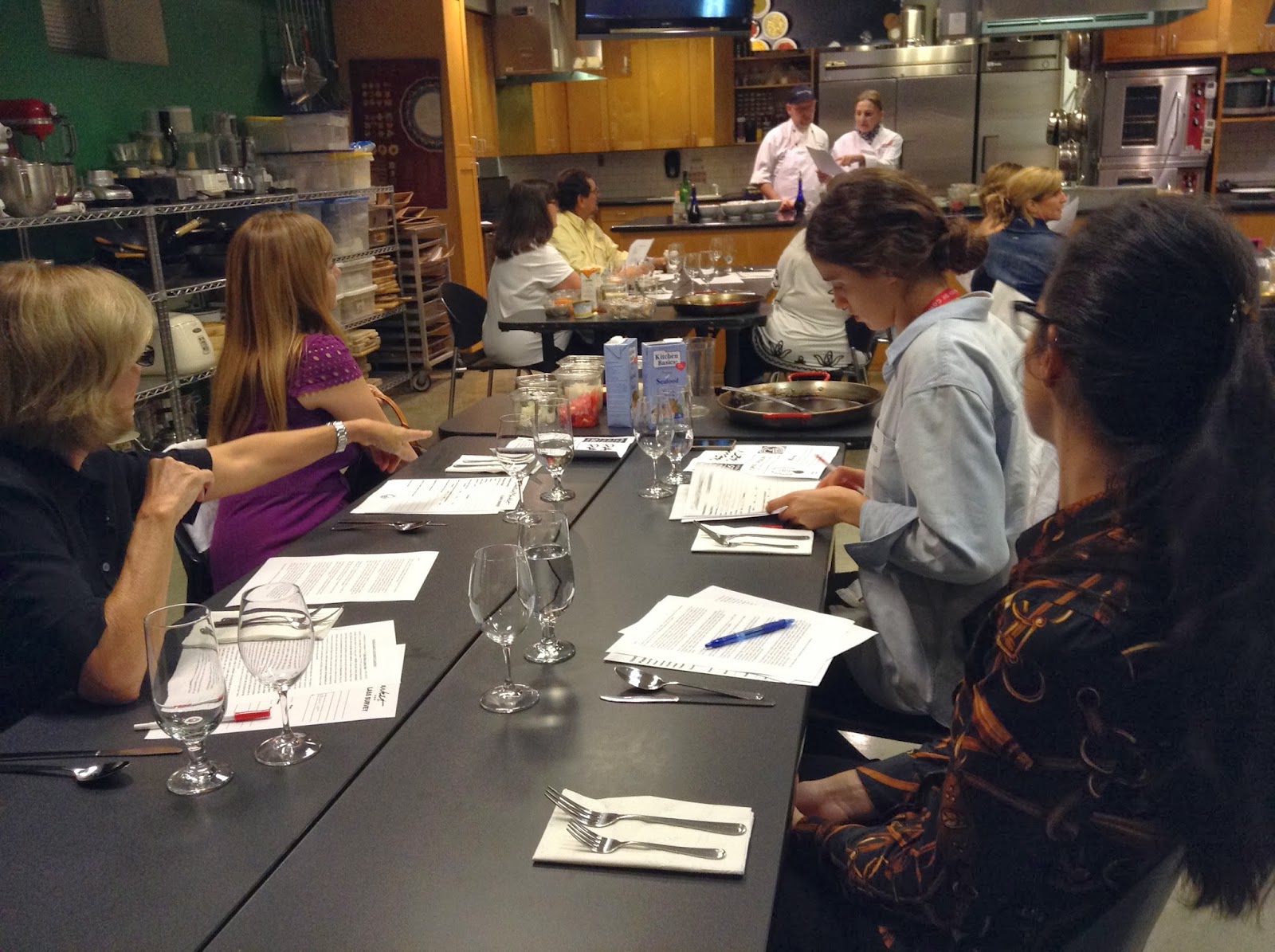1/TIGERS (STUFFED
MUSSELS)
1 large can mussels Natural (18 large pieces per can)
or 2 pounds of mussels
1 tablespoon fried tomato sauce
Juice of 1 lemon
Chopped parsley
Breadcrumbs
2 eggs
1 tetrabrick of Bechamel Sauce
Mussel shells
Open and drain the mussels.
If using fresh mussels: Wash the mussels and remove
the beards. Place in a pot with a finger of water, cover and heat until the
mussels open. Strain the juice and separate reserve the mussels shell.
Mix the Bechamel with tomato sauce and juice of the
mussels.
Chop the mussels and garnish with the lemon juice and
parsley.
Add them to the batter.
Fill the shells of mussels with the mixture.
Dip in egg, cover with breadcrumbs and fry in hot oil.
2/HAM STICKS
12 grissines
12 very thin slices of Jamón
Wrap each stick in 1 slice of ham.
Arrange the sticks in a glass.
3/SPANISH TORTILLA
6 eggs
6 medium potatoes peeled
Olive oil
Salt
1 green pepper (optional)
1 large onion (optional)
Peel and cut the potatoes into cubes and fry in a pan
with olive oil.
Chop the onion into 1/4" pieces. Put potatoes and
onions into a bowl and mix them together. Salt the mixture.
Crack and beat the eggs in a large bowl and pour in the
potato onion mixture. Mix together.
In a frying pan, cook the tortilla on one side, turn it over to cook
the other side.
The inside of the mixture should not be completely cooked and
the egg will still be runny.
DID YOU KNOW?
If you want, you can add 1 green pepper chopped to the
potatoes and onions and fry it.
4/HAM STUFFED
MUSHROOMS
10 large mushrooms
1 onion
200 gr. (7 ounces) of prosciutto
4 tablespoons of grated cheese
2 tablespoons of breadcrumbs
Oil
Salt
Pepper
Preheat oven to 190ºC (374ºF).
Wash the mushrooms.
Chop the onion and ham.
Cook the onion in a pan with 1 tablespoon oil.
When browned add the sliced mushrooms. Saute until
the agua evaporate. Add the ham and saute 1 minute more. Remove.
Add three tablespoons of grated cheese and breadcrumbs.
Fill the mushrooms and sprinkle with the remaining
cheese on top.
Bake for about 15 minutes.
5/RUSSIAN SALAD
4 potatoes
3 carrots
150 gr. (5 ounces) of peas
1 small tin of tunna
3 hard-boiled eggs
Olives
3 small roast red peppers
Mayonnaise
Cut the vegetables and the potatoes in small cubes and
boil them separately in salted water. Cooled
it.
Chopp the eggs and the olives.
In a bowl crumble the tuna and mix with the eggs and
the olives.
Add the rest of the vegetables in the bowl
Add mayonnaise to the taste and cover with strips of
red pepper.
Cool in the icebox
6/CHISTORRITAS WRAPPED
WITH ORANGE MARMALADE
1 chistorra
1 sheet of puff pastry
1 egg
Marmalade
Cut the sausage into chunks as long as the width of
the sheet.
Spread the sausage with some jam.
Place the sausage on the pastry sheet and roll until
completely wrapped.
Cut the "tube" of puff pastry and sausage
into pieces 3-4 cm. (0,5 inches) in length and paint with beaten egg.
Place on a tray with baking paper and bake about 20
minutes at 200°C (392ºF).
7/GUACAMOLE TOASTS,
ANCHOAS AND OLIVES
1 pack of Krisprolls or toast
1 small can of anchovies in oil
1 can of pitted black olives
1 brick of guacamole. or:
2 avocados
1 chopped tomato
1 chopped onion
1 lemon
2 chopped chilli pepper
Fresh coriander
Olive oil
Salt
In a medium bowl, mash together the avocados, lemon
juice, and salt. Mix in onion, coriander, tomatoes, and chilli pepper. Add
olive oil to the taste.
Spread guacamole over the toast and top with
the anchovies and the black olives.
8/DELIGHTS OF QUIXOTE
(MONTADITOS CHEESE AND QUINCE)
200 gr. (7 ounces) of Manchego cheese
200 gr. (7 ounces) of Quince
1 jar of blackberry jam
Water
Cut cheese and quince into equal slices and pile up
making a “mille-feuille”.
In a saucepan dilute the jam with some water until it
has a sauce texture.
Decorate the platter topping with the sauce.
8/BLUE CHEESE STUFFED GRAPE
Large grapes
Blue cheese (Cabrales, Gorgonzola, Roquefort ...)
Cottage cheese or mascarpone
Divide grapes in half with a sharp knife. Carefully
remove the seeds.
In a bowl mix the mascarpone cheese with the blue
cheese and fill the grapes with a little of the mixture.







